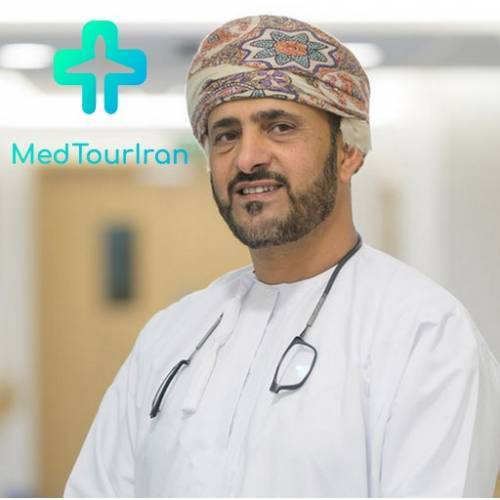

What’s the eye? What’s its function? What’s eye disease? What are the most common eye diseases? Is eye surgery treatment performed in Iran?
The eye is the embodiment of beauty and a means of looking. It is a precious part that humans possess. Some people do medical surgery for the eye while other seek the Cosmetic eye surgery. In this regard, we are going to mention the most common eye diseases and explain their treatment. The eye is likely to be affected with various diseases so we have to protect it because of its importance.
At the beginning, we touch on the components of the eye to become more familiar with it. The eye is composed of The Cornea ( a transparent tissue in the middle of the eye and its function is to collect light and focus it on the Retina) Iris (a membrane that its condition changes according to the status of vision and it is influential in the color of the eye) Pupil (a gap in the center of the iris from which light passes) Lens ( collects the light and sends it to the Retina) Retina (This part takes the collected light and replaces it with nerve signals) Macula (its function is to see small details and the quality of vision placed at the center of the Retina) Optic nerve ( the means of communication between the Retina and the visual center inside the brain) and Eye Fluid ( a transparent fluid that fills the eye cavity).
Indeed, the eye is affected by various diseases and these diseases vary in terms of the area of the defect and its treatment. In this section we will mention the eye diseases and then we explain some of the common eye diseases and their treatments.
Glaucoma or Glaucoma water, Cataract, Macular Degeneration, Retinal Detachment, Conjunctivitis, Short-sightedness or Myopia, Diabetic Retinopathy, Retinitis Pigmentosa, Tolosa Hunt Syndrome Papillary Edema of the Optic Nerve, Macular Degeneration, Bardet Syndrome, Biddle and Cataract, Rite of the Eye, Color blindness, Amblyopia or Lazy Eye, Trachoma, Uveitis, Blepharospasm, Eyes Dehydration, Eyes sore, Endophthalmitis and Visual Atrophy, Retinal Artery Blockage, Eyelid Inflammation, Retinoblastoma, Keratitis, Primary Congenital Glaucoma, Open-angle Glaucoma, Narrow-angle glaucoma and Separate Vitreous Glaucoma.
Glaucoma or Glaucoma water, Cataract, Macular Degeneration, Retinal Detachment, Conjunctivitis, Short-sightedness or Myopia, Diabetic Retinopathy, Retinitis Pigmentosa, Tolosa Hunt Syndrome Papillary Edema of the Optic Nerve, Macular Degeneration, Bardet Syndrome, Biddle and Cataract, Rite of the Eye, Color blindness, Amblyopia or Lazy Eye, Trachoma, Uveitis, Blepharospasm, Eyes Dehydration, Eyes sore, Endophthalmitis and Visual Atrophy, Retinal Artery Blockage, Eyelid Inflammation, Retinoblastoma, Keratitis, Primary Congenital Glaucoma, Open-angle Glaucoma, Narrow-angle glaucoma and Separate Vitreous Glaucoma ,etc.
Glaucoma is the most common and serious eye disease, which leads to increasingly high vision loss. The optic nerve is a section affected by glaucoma which raises internal intraocular pressure and leads to vision loss. This kind of eye disease is not accompanied by special symptoms but could be treated immediately after its discovery. It has two different types: open-angle and closed-angle glaucoma. Characteristics of the first type is that it is rife and common and the second type are severe pain as well as a sudden condition which causes vision loss.
It is not possible to prescribe a definite treatment for this disease but it is possible for the patient to resort to the usage of some eye drops or laser. However, full and successful treatment could be reached by early diagnosis of Glaucoma and through surgery.
When does a person have Cataract?
A person suffers from this disease when he is hit by a severe blow in his eye and when he suffers from diabetes or takes too much Cortisone. As a result, the eye lens gets affected with this disease and its color changes from transparent to dark and dusky or white and this replacement gradually continues till it is completely replaced to dark.
When cataract is diagnosed by the doctor, he recommends the patient to use sunglasses and avoid direct looking at any natural or artificial bright light, and when the person is not recovered, surgery operation is done to replace the dark lens with a new lens.
This is the part that cares about the quality of the sight and seeing the small details. The elderly people suffer from macular degeneration disease that is why they are considered a group with a weak central eyesight. When they look around, they can see everything that exists round them, but they cannot see it clearly.
Although there are different treatments for this disease, there is no comprehensive and satisfactory treatment that could be recommended, however, some of the treatments are: laser, some antioxidant drugs, zinc and eye injection.
As the name indicates, it is the case of the retinal detachment from the eye wall. When the retina moves, it is transferred from its place and is filled with liquid inside the eye cavity, this leads to the separation of the retina from the wall of the eye, but what is the reason for this movement and transfer? This movement takes place under severe collision or crack and aperture.
Surgery operation is the treatment of retinal detachment and in this operation the Retina is reinstalled. We can say that this process has been successful most of the time or always and the patient gets healthy after the operation.
In this disease, a person is affected with inflammation of the conjunctiva and transparent membrane and its redness. This type of disease appears because of eye infection via bacteria or virus or because of sensitivity in the eye and exposure to dust or what harms the eye.
Treatments differ when we talk about the treatment of conjunctivitis because of the different factors in creating this disease. When the eye is infected with virus only antiseptic drops and when the eye is infected with bacteria antibiotic drops are used.
Uveitis (anterior uveitis) is one of the most serious and the rarest eye diseases. This inflammation is a type of uveitis and is caused by an inflammation of the blood vessels that carry oxygen and food to the eye cells. This is why they play a prominent role in the quality of vision and eye functions. Causes of eye infection with this disease are bacteria, virus or a genetic factor.
There are different treatments for anterior uveitis, but the best treatment is the early treatment which must be done before the disease develops in the eye.
Is eye surgery performed in Iran? Are there specialist doctors in Iran? How much is the price of eye surgery?
Yes, every operation related to the treatment of eye diseases is carried out in Iran. Specialized clinics and advanced hospitals in Iran perform surgery to treat all types of eye diseases. Iran utilizes the expertise of doctors who have studied at the best universities in the world and Iran.
MedtourIran company provides you with the best services and the best doctors to diagnose and treat eye diseases and can attend in its medical centers (some hospitals and clinics) in Tehran and Mashhad and Shiraz and follow up your health.
Cataract surgery cost in Iran is starting from $1200 for both eyes.
Lasik eye surgery cost in Iran is starting from $650 per eye.
Glaucoma surgery cost in Iran is starting from $1450 per eye.
Read more:

22 Jun 2020

18 Jun 2020

16 Jun 2020

15 Jun 2020

27 May 2020

12 May 2020